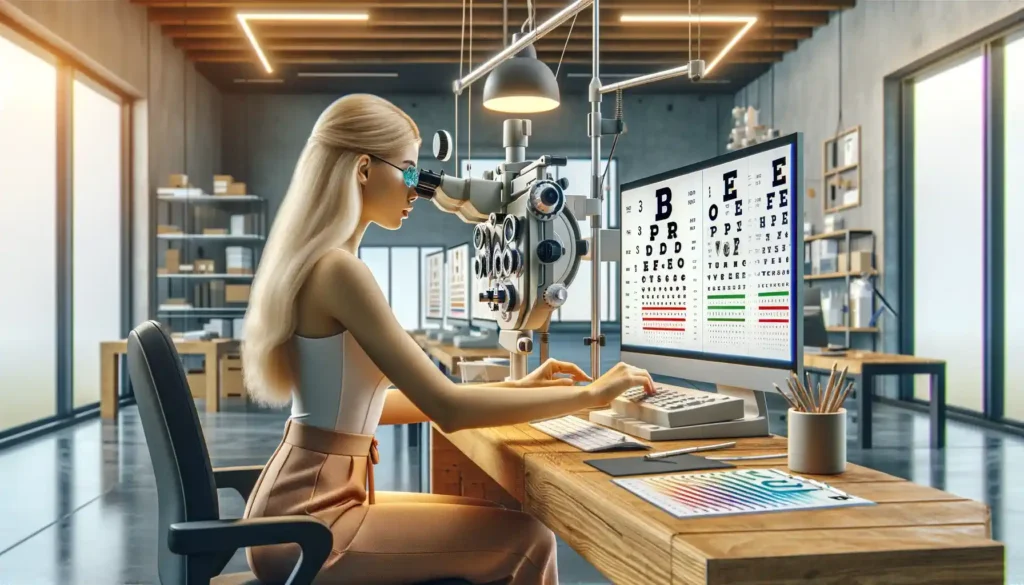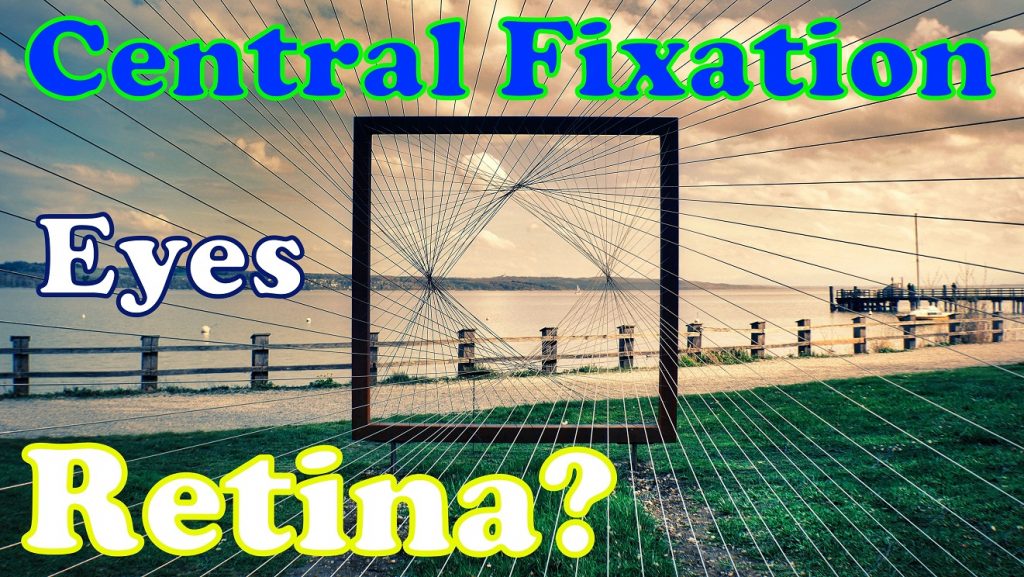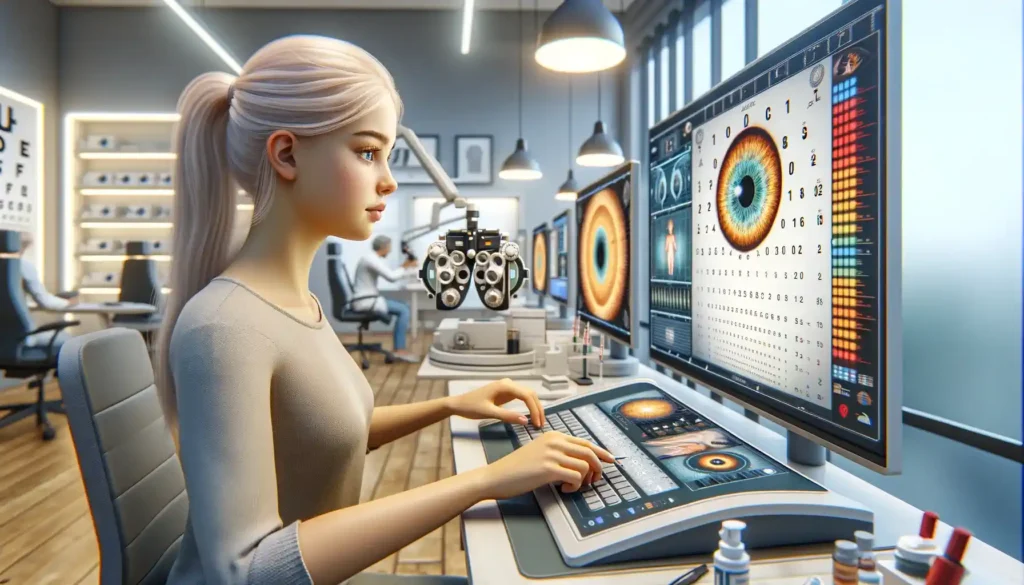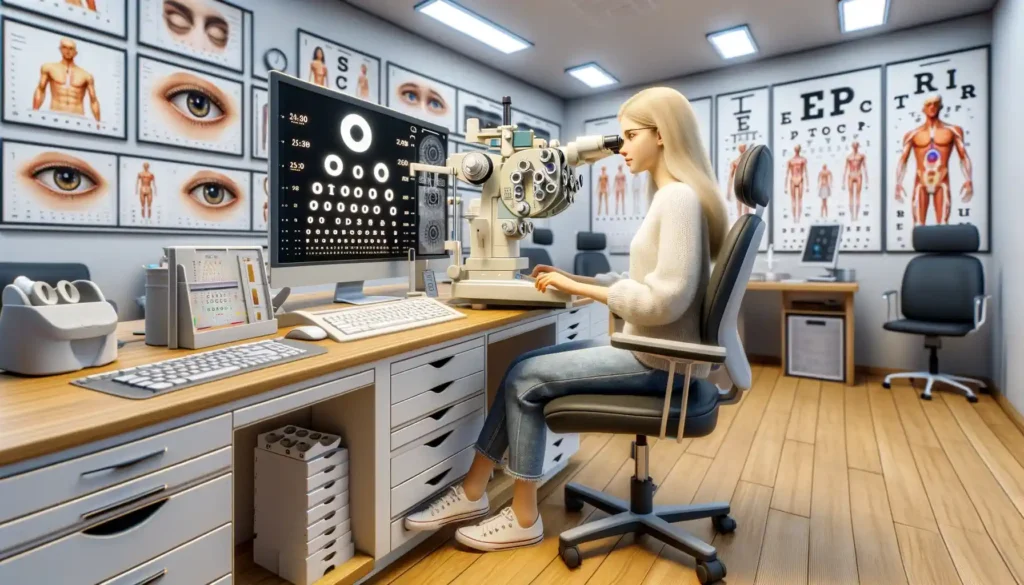Central fixation eye exercises for better vision. Hello everybody and welcome to the Natural Eyesight recovery blog. My name is Sviatoslav and today we will talk about Central fixation at the retina, eye anatomy, tired eye, macula, and retina.

Central fixation eye exercises for better vision
The next technique for the natural restoration of vision is called central fixation. This is, perhaps, the most difficult-to-learn method of removing mental and physical stress. Bates himself puts in first place in his program. From his words, it is clear that the ability to central fixation is of prime importance for normal vision. But from the way, Bates describes the ways and means of restoring this fixation. It is so difficult to understand anything, in it. At least I couldn’t do it when I first got it in my hand.
Enhance Your Vision: Central Fixation Eye Exercises

For the opportunity to get a better vision or to get rid of glasses. I was convinced by Bates’s opinion about the causes of visual impairment. His words about the dangers of wearing glasses, and the importance of stress relief. However, only after I got to the topic of “Central fixation”, the enthusiasm to engage my vision completely evaporate. I realized that it is important for the eye, but did not understand how to restore this fixation.
The book was abandoned for many years until I got to training to get rid of eyeglasses. Which stimulated my desire to help people in a similar way. Still, I also did not understand the essence of the Central Fixation from his lectures. And without this, it was pointless to start teaching and maintaining your visual acuity.
As a result, I had to cover myself with books and, having studied various sources. Finally, understand this most important component of our vision.
The central fixation is so hard to understand because it seems that few people imagine the process of visual perception. So let’s start with a short description of this mechanism.
Central fixation secrets
It is known that all rays from a perceived object are focused on the back surface of the eyeball, called the retina, or reticular shell. It is the thinnest, most difficult, and most physiologically important part of the eyeball. Which is the beginning of the visual analyzer, its peripheral department.
Macula anatomy and central fixation
Having the most complex structure of ten layers. The retina tissue in the center becomes thinner to one layer, forming a small depression – the central hole. Inside it is the thinnest layer of the retina and the center of the most acute vision called a macula. That’s what it is central vision, since here is the place of maximum sensitivity of the eyes. Which is responsible for the clarity of the image. Central fixation eye exercises for better vision. Central fixation is the ability of the eyes to see most clearly what we are looking at directly. And not what is around us.
Why, in reality, do we not feel this, but see the object either equally clear or equally blurry? Why when looking at a person does not seem to me that I can see his nose more clearly, for example, and less clear – cheeks? To understand this, it is necessary to remember that the main law of vision is movement, more precisely, the movement of retinal nerve cells at a speed of 100 and more times per second.
Avoid eye fatigue to see better
Central fixation eye exercises for better vision. Tired eyes interfere with the scanning process. Instant scanning is difficult due to eye strain. Overload occurs due to excessive using the eyes without rest or after any negative emotions. It leads to a violation of the accommodative ability of the eyes to focus rays through the lens directly onto the central part of the retina. The sensitivity of the fossa itself is reduced to such an extent that the eyes begin to see better with other parts of the retina located in the central fossa.
Eye Care Essentials: Central Fixation Drills for Healthier Vision
A person detects this when he tries to see an object from the side or upper vision or narrows his eyes too much, and it seems to him that he sees it better. In the future, he begins to use these eye manipulations already consciously, then out of habit, which leads to eccentric fixation, according to Dr Bates.
It is unnatural for the eyes and leads to various anomalies of refraction, to an even greater tension of the visual mechanism, because deprives him of a relaxed state and the possibility of involuntary vibrations at the level of the retinal nerve tissue. Consequently, the physical activity itself depends on the degree of relaxation of the eyes, the mental and human body.
Eye training course Eyesight Academy to renew central fixation

Introducing Eyesight Academy’s Revolutionary Eye Training Course! Unlock the power of perfect vision and renew your central fixation with the Eye Training Course from Eyesight Academy! Are you tired of straining your eyes, experiencing blurred vision, or feeling the discomfort of eye fatigue?
Learn clear vision habits to avoid eye fatigue. The best eye exercises in the course will help you to stretch your eye muscles and renew your eye focus.
Top 3 causes of central fixation loss
According to Bates, the main reason for the loss of central fixation is mental and physical stress. And since all abnormal conditions of the eyes are accompanied by one kind or another of tension. Absolutely everyone needs to restore it. After all, when the brain is tense, the eyes are more or less blind, and first of all, the visual center weakens.
When the eyes are capable of central fixation, they have not only perfect vision. But also in an ideal state of rest and can be used for a long time without fatigue. Surely many have noticed how some people squint when trying to see something in the distance or make out the fine print. They don’t want to wear glasses, but their eyes can no longer deal with their tasks. Often these people do not even notice that they are squinting, it has become a habit with them. But this is abnormal to the eyes and is fraught with astigmatism.
Spectacles can cause central fixation loss
The second major cause of loss of ability to central fixation is the wearing of glasses. And especially their incorrect selection according to the distance between the centers. Think about what is happening in the ophthalmologist’s office. He puts diagnosis, and then selects lenses of appropriate diopters for the right and left eye. Having written these numbers in the prescription, the doctor makes another measurement and indicates it in the recipe. When I ask people, what the doctor Measures? I most often answer that the distance between the pupils. Yes, this is how it looks from the outside. In fact, the doctor is interested in the distance between the visual centers (macula) on the retina of our eyes.
Eyeglasses selection – centers do not match macular centers
By setting the center-to-center distance for lenses in size between pupils, the doctor may well admit an error. Since the center pupils and macular centers are not at the same level. If the center of the lens does not correspond to the visual center, then the formation of a false macula occurs somewhere on the lateral, lower, or upper areas of the retina. If, in addition, lenses are incorrectly centered in optics, a person, putting on glasses, will feel dizziness, nausea, pain, and sore eyes.
The same feelings are experienced by a person who uses other people’s glasses, as this is often the case in older families. Eventually, the discomfort goes away because the person gets used to the “Inconvenient” frame, but, only due to the formation of a false visual center on the lateral parts of the retina. As a result, when a person takes off his glasses, the surrounding objects are either blurred or bifurcated. Sometimes the eyes see several images: this happens in cases of frequent change of glasses with different shapes and sizes of frames, as well as when buying them without a doctor’s prescription.
How to get better Low-light vision

It turns out that at night or in the evening when the lighting is minimal, we see a clearer and better object by the lateral parts of the retina. This fact was noticed by astronomers back in the century before last, who discovered that if you look directly at the constellation, then only bright stars, but if you look to the side, as if sideways, then you can distinguish stars of lesser magnitude. So if you need to find a path in a dark forest, it is better to look not directly under your feet, but somewhat inside. Then with peripheral vision, you can catch what is inaccessible.
Visual Wellness: Central Fixation Eye Exercises Unveiled
Direct look. We cannot distinguish colors with the lateral cells of the retina. Hence the expression “At night all cats are grey.” But to navigate in darkness we can do much better with sticks – peripheral cells. Thus, it is necessary to activate both central and peripheral vision. Before laying out the recovery methods of central fixation, I note that in this form and sequence, they are not described anywhere. I collected all the methods bit by bit, analyzing various sources and drawing on a wealth of personal and practical experience.
Thanks for reading. I hope it will help you to understand how central fixation works. Subscribe to my channel and I will see you again.
Eyes relaxation exercises (Blink and Breathe) Eyes Moisturizing. How is eyesight clearing up?

